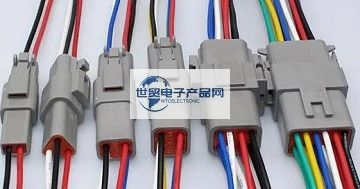Categorization:Product Information
Harness design refers to the process of designing and laying out a harness system consisting of wires, cables, connectors, etc. In an electronic device. A wire harness is a collection of wires or cables that carry power, signals, and data and connect individual electronic equipment components. Harness design needs to consider factors such as circuit layout, signal transmission requirements, electromagnetic compatibility, mechanical constraints, and maintainability to ensure efficient operation of the harness system in the equipment. The following is the basic process of harness design: System planning and requirements analysis: Understand the functions and requirements of electronic equipment, and determine the basic requirements of the harness system. This includes power supply requirements, signal transmission rates, electromagnetic compatibility requirements, environmental conditions, etc. Circuit design and layout: According to the circuit design of the equipment, determine the connection relationship between the various electronic components. Draw the circuit diagram and consider the path and wiring requirements for signal transmission. Harness analysis and distribution: According to the circuit layout, different types of signals are classified, and the number and type of harnesses are determined. Distribute different signal harnesses to appropriate locations, taking into account signal interference, isolation requirements, and the rationality of the layout. Material selection and component selection: select appropriate wires, cables and connectors according to system requirements and design requirements. Consider factors such as signal characteristics, current loads, temperature requirements, wear resistance, and environmental suitability. Harness path design: determine the path and installation method of the harness. Consider space limitations, mechanical constraints, and maintenance requirements to avoid interference and conflict with other components. Electromagnetic compatibility design: ensure the electromagnetic compatibility of the wiring harness system and reduce the mutual interference of signals and electromagnetic radiation. Take measures such as shielding, isolation and grounding to optimize the layout and arrangement of the harness. Simulation and verification: The electromagnetic field simulation software is used to simulate and analyze the wiring harness system, and evaluate its performance and reliability. Conduct EMC test and signal integrity verification to ensure that the wiring harness system meets the design requirements. Fabrication and installation: Fabricate the harness according to the design document, assemble and identify the harness. Install the harness in the equipment, and conduct wiring, fixing and commissioning of the connector. Quality control and maintenance: Conduct quality control and test of the wiring harness system to ensure the reliability and stability of the wiring harness.

---------------------------------------------------------------------------------------------------
About the World Trade Electronic Products Network Platform related brief introduction and sales product brief introduction: World Trade Electronic Products Network-professional agent/production/sales of various { connector | wiring harness | cable products }; If you have relevant [connector | harness | cable products] procurement/purchase needs or want to buy/know what connector | harness | cable products solutions we can provide, please contact our business personnel below; if you have relevant [connector | harness | cable products] sales/resources and promotion needs, please click "Business Cooperation ←" to negotiate with the specialist!